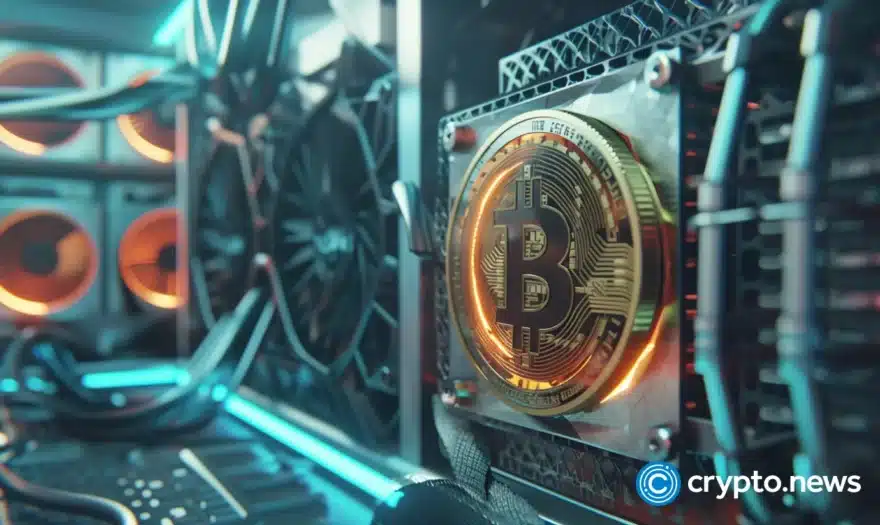Analysis: How Crypto Projects Can Fully Achieve True Decentralization

Blockchain has been associated primarily with finance and crypto. Still, it has also been used for various other applications in various domains and industries, including healthcare, supply chain management, asset tracking, energy management, smart home/city, and the Internet of Things (IoT). Blockchain can provide transparency, accountability, integrity, scalability, cost-efficiency, security, and privacy for these applications and industries.
What is Decentralization?
While several current works propose to adapt and apply Blockchain-based architecture for IoT and interconnected devices on edge networks, there is a significant lack of research to propose and apply blockchain technology for the core networks of the Internet and its protocols, applications, and services.
A good or service is considered decentralized if managed by a group of participants who use the majority rule. In the case of bitcoin, most network participants determine its characteristics, such as the total supply of bitcoins.
Understanding decentralization and its significance are critical to comprehending cryptocurrency in general and why it was invented in the first place.
Decentralization: How Does it Operate?
Some elements of the system are necessary for blockchain to be decentralized. Transaction integrity is maintained by highly secure encryption. Miners are compensated with freshly produced Cryptos for validating transactions and adding them to the Blockchain Network. This suggests that transaction processing is not centralized as a result. Instead, through “proof of work,” individuals compete for the opportunity to confirm and add transactions to the blockchain. This guarantees the blockchain’s accuracy.
The miner who successfully solves complex math problems, which often necessitate massive computing power, is the one who eventually “wins” the right to add the block (a new transaction) to the blockchain. The miner could be anyone on the planet. To demonstrate Crypto decentralization even further, if a miner fails or refuses to add a verified transaction to the blockchain, he is quickly replaced by a willing member (or user).
Why is Decentralization Important?
Decentralization is critical for correcting the concentration of power in a system and should be implemented in all aspects of any blockchain application. This ensures that services are more equitable and of higher quality. Decentralization is a crucial contributor to the security of crypto exchanges. One can feel this using various trading tools, including the BTC formula. Other advantages of decentralization are as discussed below:
- It provides a risk-free environment: A blockchain network’s participants are not required to trust or know one another. They have a duplicate of the same data in the form of a distributed ledger, which records all transactions. If a user’s ledger is tainted, the entire network disproves and rejects it.
- It improves data validation: It is not unusual for businesses to share data with their reliable partners. This information is then refined and properly preserved, only to be used when it is required to be shared further down the line. There is always a potential for data loss or error to enter the workstream whenever the data is changed. Every participant of a decentralized system can access the data completely and in real-time.
- Decreases weak points: Decentralization ensures that significant points of weakness are identified and addressed. These points could lead to overall system failure. By addressing them, the number of weak points in the network is reduced significantly, encouraging better service and overall system improvement.
- Distribution of resources is made possible: It also ensures that resource distribution is carried out optimally, so that promised services are delivered with more extraordinary performance and consistency and a lower likelihood of general failure.
Proof-of-Stake {PoS}
Proof-of-stake Decentralization The number of stake pools or validators, the distribution of token supply across those validators, and the percentage of token supply staked are all ways to quantify blockchain. The greater the rate of token supply staked, the more difficult it is to disrupt the network.
Consider how proof-of-stake tokens are initially distributed in private sales. Proof-of-stake blockchains determine who is allowed to add blocks to the chain based on the number of tickets they own. The sale of tickets to venture capital firms or other inside investors before they are available to the general public may give these early investors an unfair advantage.
Proof-of-Work {PoW}
Proof-of-work Users and nodes — non-mining and mining — comprise blockchains such as Bitcoin. The decentralization and security of these networks are determined mainly by their hash rate and the number of entities among which the hash rate is distributed. A proof-of-work blockchain’s hash rate represents the total processing power provided by miners to the network. The higher the hash rate, the more difficult it is to interfere with.
Anyone can create mining pools and add hash rate to a collection on proof-of-work blockchains. This means that at any time, the hash rate in a collection can be redistributed to another collection. Nonetheless, a higher hash rate distribution across a more significant number of collections is preferred for decentralization.
Investment Strategies for Blockchain Technology
Blockchain technology and stocks can be profitable investments, and there are several ways to get started with your first blockchain investment. When anyone is talking about investing in blockchain technology, Bitcoin is usually the first thing that comes to mind and should not be overlooked. Aside from Bitcoin, you can also invest in crypto penny stocks such as Altcoin and Litecoin.
There are also apps and services that raise funds with blockchain technology in the pre-development stage. As an investor, you can purchase coins with the expectation that their value will rise as the service or app grows in popularity. Another way to invest in blockchain technology is to invest in blockchain-based startups. Finally, there is the option of investing solely in blockchain technology.
Bottom Line
The crypto world is chaotic and perplexing. As a result, some investors only have a basic understanding of their investments, allowing some coin founders to wield more power over a decentralized protocol than they should. Even early bitcoin investors revere Satoshi Nakamoto, even though the pseudonymous individual does not influence bitcoin’s direction.
While there is no reason for a figurehead to act in anything other than the best interests of the ecosystem they helped to create, investors should be wary of their influence.
Examples of today’s crypto market include Ethereum’s Vitalik Buterin, Cardano’s Charles Hoskinson, Polkadot’s Gavin Wood, and Solana’s Anatoly Yakavenko.











